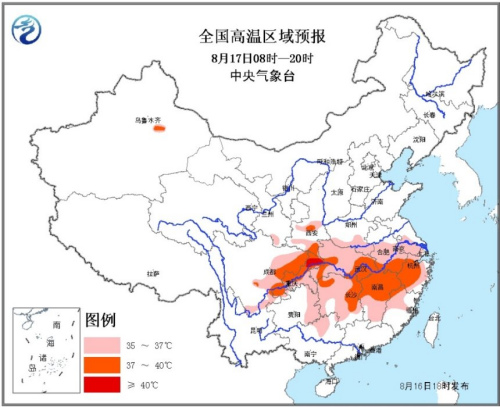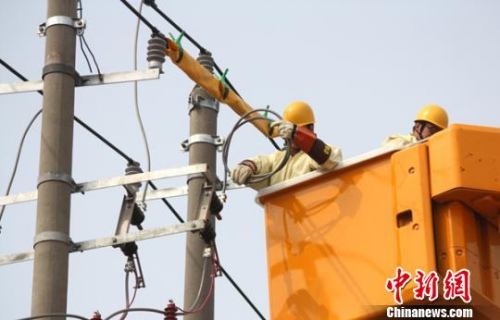Small disputes lead to tragedy. Who is to blame for Deyang female doctor’s suicide?
On August 25th, a female doctor committed suicide in Deyang, Sichuan. This tragedy is due to a friction in the swimming pool. After the spread of online media, female doctors were searched by human flesh, and they were suspected to be desperate because of unbearable pressure. After the news came out, some online media and marketing numbers that had forwarded one-sided information quietly deleted the video. At the same time, the family that clashed with the female doctor began to be searched by human flesh. In just a few days, the public opinion of netizens has repeatedly reversed, which has caused harm to both sides of the incident. The police are investigating the truth of the incident.
A small dispute has evolved into a tragedy today, and cyber violence has played a disgraceful role in it, which makes people feel awkward.
Female doctor committed suicide after swimming pool storm.
On August 25th, Dr. An, the chief pediatrician of Deyang Hospital of Integrated Traditional Chinese and Western Medicine, left a message to his mother, "Mom, I’ll be up in two minutes" and hurried out. The family later found that she could not be found, but the relatives and friends received farewell messages on their mobile phones. Everyone went out separately for 2 hours, but it was too late. Dr. An had committed suicide by taking medicine in the car. Five days ago, she and her husband just got involved in a swimming pool storm.
According to Dr. Zhang, a colleague of Dr. An, on August 20, Dr. An and her husband went swimming. In the swimming pool, two 13-year-old boys may have contact with Dr. An. Dr. An asked the boy to apologize, but he was rejected. The boy spat at her, made faces and made a series of insulting moves. Dr. An’s husband might be a little excited and rushed to press the boy into the water. After that, the boy’s mother beat Dr. An in the bathroom of the swimming pool with her family and friends. The boy’s mother, Ms. Chang, explained that her son only met Dr. An while swimming, but Dr. An’s husband rushed over and pressed his son into the water, and slapped him in the face, and his son and classmates were also pushed forward.
In the end, the two sides reported to the police, and the police asked them to coordinate privately. After leaving the police station, Dr. An’s husband apologized to the child on the spot. But things didn’t end. The next day, the boy’s family came to Dr. An and her husband’s unit to make a scene and asked the leader of Dr. An’s unit to expel her. After that, Dr. An’s mood became very bad, and she took a few days off, which made her feel stressed and there were many criticisms from the Internet.
Online media video titles caused an uproar.
According to the investigation, on August 21st, the boy’s family members not only went to Dr. An’s unit to make trouble, but also edited the recorded friction video and posted it on the Internet, saying that "the staff of the Water Resources Bureau beat the underage doll". On August 22nd, Weibo’s "First-hand video" released the video of the swimming pool with the caption "Suspected that the man hit the child in the swimming pool because his wife was hit while swimming". However, many influential online media forwarded it without verifying with both parties. Among them, the forwarding of a local Deyang from the media "Deyang Breaking King" may have a greater impact in the local area. Many netizens commented on the bottom and accused Dr. An’s husband of being rough with his children.
Zi Niu news reporter found that after Dr. An committed suicide, these media quietly deleted the false information forwarded before. After deleting the information forwarded by himself, "Deyang Breaking King" sent an apology letter on Sina Weibo on the evening of 27th, expressing "sincere apology" and saying in the apology letter that he was only Weibo who forwarded other media. "There was no privacy leakage of any party, and no discourse guidance and comments were made." However, the "King of Deyang Breaking the News" quietly deleted this letter of apology soon, and closed the comments because many netizens criticized it in their Weibo posts.
An insider asked angrily, "Have you verified the truth? You talk nonsense before the police come to a conclusion, right? … … A lot of people talk about gold, and they ruin their bones. In the era of advanced information, people will learn to follow the trend and cover up the truth. The power of language, cold violence can finally make a person collapse. At the same time, I hope that freedom of speech can also make these big V’s get corresponding supervision. False reports can be punished accordingly. The party who looked on coldly in their mouths complained to people about her grievances in this way. The dead are gone, I hope there is no poison tongue in heaven. She, a young mother, defended her dignity with her own life and cried out to the sick society with her death. "
The police are still investigating and the hospital will issue a statement.
Zi Niu journalist called Deyang Hospital of Integrated Traditional Chinese and Western Medicine on the 28th. Director Bi of the hospital office said that he would not accept any telephone interviews at present, but now the hospital is preparing a statement about the incident, and the review process of the statement is also in progress, which will be published in the hospital’s official Weibo in about two days.
Dr. Zhang, a colleague of Dr. An, also made a similar statement.
The telephone operator of Deyang Public Security Bureau said: "Because the incident about Dr. An involves two minors, and the specific situation is still under investigation, a public statement will be issued after the investigation is clear." Zi Niu news reporter found the contact information of the boy and mother who offended Dr. An in the swimming pool at that time, but after the phone was just connected to show the identity of the reporter, the boy and mother said "sorry" and then quickly hung up the phone.
The boy family was attacked by human flesh.
Although the parties are not willing to talk about this matter further at present, the network storm has begun to develop in another direction.
The family of the boy who clashed with Dr. An was searched by human flesh, and the names, identities and other information of the boy and his family were posted online. There were a lot of critical and abusive posts in the post bar of the school where the boy was suspected. Some people just insulted Dr. An in a similar way a few days ago, even under the influence of false posts forwarded by online media.
Dr. An’s friend still kept her head. The insider appealed to stop the human flesh search through Sina Weibo. She said, "Although I am very happy to see so many friends who are keen on Dr. An, I still insist on refusing the human flesh search and going through normal judicial procedures! We don’t want any more tragedies, we just want to seek justice for Dr. An! " "I hope that netizens will treat it calmly and rationally, and don’t have any excessive behavior. I believe that Dr. An won’t want to see the tragedy repeat itself, so please continue to pay attention to the follow-up, but don’t be like them."
Views of legal professionals
The child’s family released videos and other acts suspected of infringement.
Lawyer Liu Aidong of Nanjing Guotai Xinhua Law Firm believes that it is impossible to judge whether the two children are interested in the dispute in the swimming pool at the beginning. Although the behavior of Dr. An’s husband is not appropriate, it is such a big thing. If there is no video uploaded by the children’s family and one-sided spread on the Internet, there should be no consequences. "At present, the police have not reported the results of the investigation. It can be seen from the video that the child was pressed, but it was not clear in other hands-on action videos. Afterwards, he apologized and did not cause other consequences. This matter is over."
"After the incident that day, a series of behaviors of children’s family members going to the hospital and sending videos online are likely to be suspected of infringement." Lawyer Liu believes that the specific behavior of family members going to the hospital depends on the police investigation results, but if this behavior causes serious consequences, it may be suspected of gathering people to disturb social order. "According to the information currently available, the family members said a lot of ugly words in front of Dr. An’s colleagues and patients, demanding that she be dismissed, saying that she is not qualified to practice medicine, etc., which is definitely openly derogating from others’ personality."
If the network content is inaccurate, the party concerned has the right to request deletion.
Lawyer Liu believes that there are many reasons for Dr. An’s suicide. Apart from his own personality, the video of the swimming pool incident is definitely one of the reasons. If the content posted on the Internet is not objective and comprehensive, it is very unfair to one party. "If it is just a video, there is no editing and text narration, there is no problem, but if it is contrary to the facts, or it is very one-sided, it will mislead people and actually cause harm."
"This passage is said to quote Ms. Chang, the mother of the child. In a sense, it still belongs to the usual scope of public opinion supervision, and there is no mention of personal information such as the name, address and work unit of Dr. An and her husband. Of course, if the written description is inconsistent with the facts, Dr. An and her husband have the right to ask the other party to delete it and make necessary clarifications. " Lawyer Liu said that if someone leaked the personal information of Dr. An and her husband on the Internet and there was a causal relationship between this behavior and the serious consequences of Dr. An’s death, it was suspected of violating the crime of infringing citizens’ personal information in Article 253 of the Criminal Law; If the information network is used to insult and vilify Dr. An and her husband, which leads to the serious consequences of Dr. An’s death, according to the judicial interpretation, the crime of picking fights and causing troubles can be determined.
Say one more word
Reject cyber violence and start with me.
A small dispute has turned into such a tragedy. I am afraid that neither the parties to the dispute nor the competing communicators on the Internet have thought of this result. Ironically, Dr. An’s suicide is not unrelated to cyber violence, and now a new cyber violence has begun, targeting the children and their families on the other side of this dispute. In fact, there is no justice in this new cyber violence, and it is not fundamentally different from the cyber violence that Dr. An and his family encountered before. There is no fundamental difference between cyber violence and violence in reality. The difference may be that the latter needs to move his fist, while the former only needs to type a few words on the keyboard, causing harm and even killing people invisibly, which is even more chilling. Both network communicators and people who eat melons must be responsible for their words and deeds on the Internet. Before a video or a rumor is unconfirmed, "Don’t jump to conclusions". Reject cyber violence and start with me! (Zi Niu news reporter Liu Liu Song Shifeng intern Ai Luqi)








![[2] [2]](https://baidubox-emoji.cdn.bcebos.com/imgs/%5B2%5D.png?r=2025100816) .
.![[3] [3]](https://baidubox-emoji.cdn.bcebos.com/imgs/%5B3%5D.png?r=2025100816) .
.

![[4] [4]](https://baidubox-emoji.cdn.bcebos.com/imgs/%5B4%5D.png?r=2025100816) .
.


![[J] [J]](https://baidubox-emoji.cdn.bcebos.com/imgs/%5BJ%5D.png?r=2025100816) . medRxiv, 2023: 2023.10. 26.23297629.
. medRxiv, 2023: 2023.10. 26.23297629.




